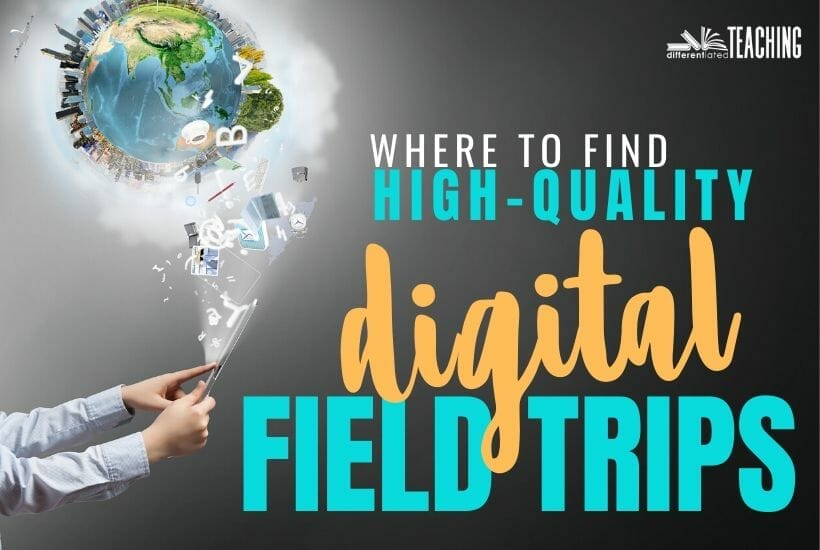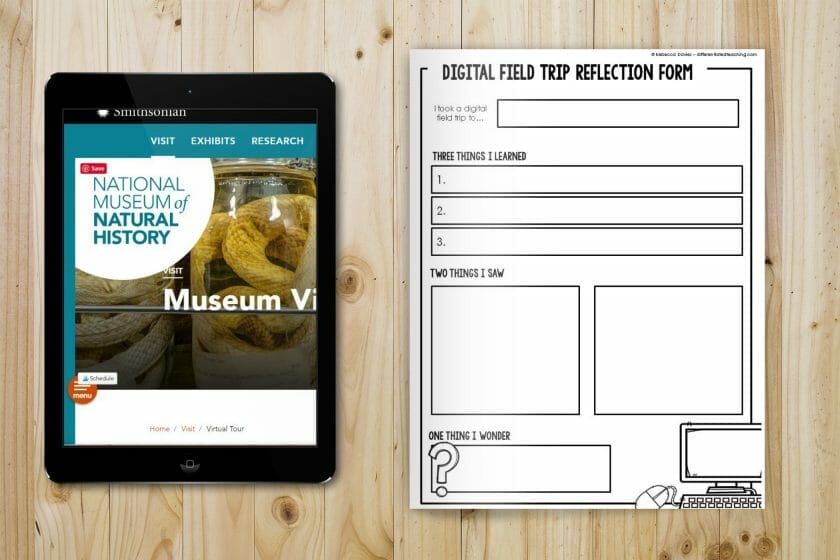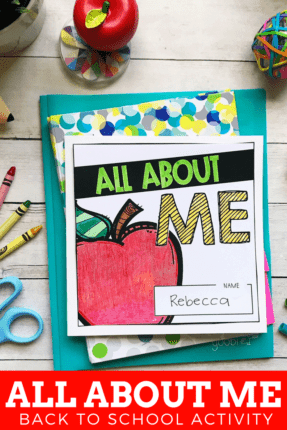The coolest digital field trips that boost student learning
Have you ever taken your students on a digital field trip? Field trips are a wonderful way to give your students real-world exposure to the content you’re teaching. There are so many experiences that just cannot be replicated in the classroom, and a virtual field trip allows your students to have the interaction needed to get a deeper understanding of many concepts.
However, there are a number of downsides to field trips as well. They can be expensive, which means many districts have limited or removed them from their budgets. Field trips can also be stressful. Keeping track of all the students, getting permission slips, and scheduling busses are just a few of the details in planning a field trip. It also means students miss a full day of instruction, including those that receive special services. Finally, it can be challenging to locate nearby experiences that align with your curriculum and standards.
Since sacrificing these experiences is just not an option, you’ve got to be creative in planning how you’ll give your students these authentic experiences. Virtual field trips are a great way to do this!

Advantages of digital field trips
There are tons of advantages to going digital with your field trips. There are no permission slips needed, you’re not going to need buses, and most are free! This means you are no longer bound by the time or money restrictions that often get in the way of the experiences we want to give our students.
Digital field trips can also be a way to make somewhat dry content more exciting. For example, learning about the Pilgrims and Wampanoag is common around Thanksgiving, but what if you could give your students exposure to what it was really like on the voyage of the Mayflower?
Learn more about this Thanksgiving Webquest & grab a free student printable.
Finally, these virtual experiences can offer your students access to experts in the fields they are studying. This exposure can help them see how the skills they are learning can apply to careers and real-world experiences.

Getting started with virtual field trips
As you think about utilizing virtual field trips in your classroom, there’s a lot to consider. However, you’ll find that many resources are available to help you get started, and many great options await you.
What you need to know about planning a virtual field trip
While it might seem like taking a digital field trip requires no preparation, you should know a few things.
First, be sure to investigate the platform you’re using. Some may offer live streaming, while others may have pre-recorded videos. You’ll want to know this so you can plan your time accordingly.

When it comes to live-streamed virtual field trips, some sites offer you an exclusive classroom experience. Others offer a shared session that can include multiple classrooms from around the country or even the world. One advantage of these live sessions is there is often a question-and-answer period to allow students to get expert insight and answers to their pressing questions.
You’ll also want to investigate whether the sessions are prescheduled or if the site allows you to request a specific time and date. This can be important when planning your schedule or deciding how to structure a unit that will include one of these experiences.
Where to find virtual field trips
Digital Databases for Guided Experiences
One place to find virtual field trips is through an online database. These databases contain many options, so you’ll want to give yourself time to dig into these resources to find exactly what you need for your students.
Most field trips listed in the databases below are free, but be aware that a few cost money. Enjoy searching through all of the field trip options!
- The Center for Interactive Learning and Collaboration: This is a paid site with science and STEM-related options, but the cost is minimal (currently $25 for 10 digital field trips). The field trips on this site are live and interactive. Each program is 30 minutes and has a 15 minute Q & A session.
- National Geographic: As expected, these virtual experiences are about biology and animal-based topics. You can register for these free live sessions, but if you want to be one of the six classes shown on camera, sign up early. One advantage of this site is that the sessions include a teacher guide to help you prepare for the live session. There are articles and resources to help build background, and the guide also includes follow-up activities.
- Longwood Gardens: These free, live field trips focus on plants and botany. The sessions are 30-45 minutes, with 7 topics. Each division is based on grade level, which helps ensure the material’s applicability. The educators at the garden are very knowledgeable, and the programs are direct to your classroom. Just know that they require registration two weeks before your request date.
- Discovery Education: This website has so many free digital field trips, and there’s a sort feature to help you find exactly what you need. There are live options and on-demand ones, too! Discover Education virtual field trips all offer a teacher guide with activities, discussion questions, and more.
- Liberty Science Center: This is another site with a fee, but it offers live sessions with educators at the Liberty Science Center. You can find what you need by searching by grade level, and sessions are available about many different math and science topics. Your session takes place through Google Hangouts, each lasting about 45 minutes, including time for questions.
- Learn Around the World: With free and paid options, you’ll have some digging on this site. While you must register for a membership to sign up for a virtual field trip, a free membership is available. Once you register, you can access a calendar to see the available events. Although you can’t customize the session to your classroom needs, this will let you plan ahead. Sessions are 45-minutes long and include topics related to geography, history, science, and more.
- Exploring by the Seat of Your Pants: This is a free site with monthly calendars sharing available digital field trips. They broadcast these 45-minute sessions live via YouTube, and you can ask questions via the comment bar. While it is not mandatory, signing up in advance allows you to be one of the classes featured on camera. You can also access their previously recorded sessions on their YouTube channel.
- Durham Museum: This free site focuses on social studies content for various grade levels. The field trips include many primary sources and offer activities for before and after your session. The virtual field trips are 30 minutes, with time for questions. You can plan around your needs with flexibility since you book sessions independently.
- Field Trip Zoom: This site requires payment as well. However, it can be slightly pricey (upwards of $200 per session). However, I included it because there is a one-month free trial available. The site offers 30-45 minute prescheduled live-streaming events or the opportunity to customize your own session date and time. Their extensive catalog of subjects and grade-level options makes it worth considering, especially if you use your free trial month.
- Microsoft Education: This free site has live virtual field trips on topics related to science, history, and more. They conduct sessions via Skype. You can access standards-aligned content to assist you in preparing and debriefing. While you’ll need to register for the site, it offers some flexibility in scheduling.
Self-guided digital field trips
You also have the option of engaging in self-guided exploration. You can do this as a whole class via your projector, independently, or in small groups.
Unlike guided field trips, these require a little more work. You’ll want to set a specific purpose to keep students on task. However, there are a number of really amazing opportunities for self-guided virtual field trips that I loved using in my classroom.
Here are a few of my favorites:
- The Smithsonian Museum of Natural History: This is such a cool one! It offers a virtual tour through the museum room-by-room. Your students explore the current or past exhibits. They can even observe how the specimens are cataloged and stored behind the scenes.
- Google Expeditions: I had the opportunity to experience the Google Cardboard Virtual Reality viewer at a conference several years back, which was amazing. We took the expedition to Mount Everest, and it was so amazing to see how they could use technology to help us feel like we were standing on the edge of the snow-covered mountain. Google Expeditions offers many great experiences (and you don’t need Cardboard to make them work).
- Google Lit Trips: These are great for getting students more deeply immersed in the books or novels you’re reading. These lit trips allow you to explore the cultural and historical settings related to the reading. They help students have a better perspective on the events of the story. This is better as a guided activity for younger learners. However, it is a great opportunity to build depth into a novel study for older students.
- The White House: This site offers a virtual tour of the White House. It is perfect for President’s Day or during your unit about the branches of government. With maps and videos, your students will experience what it might be like to live there. There’s even a chance to see what it might be like to be president for a day!
Unique virtual field trip options to engage students
If you’re looking for something fun or unique to engage your learners, these sites offer great options that are really immersive and exciting.
- Goose Chase EDU: Create digital scavenger hunts that take students worldwide. The site has pre-planned options at historical sites (like Gettysburg) or museums and zoos. However, teachers can also create their own virtual scavenger hunt. This is a fun way to help students learn.
- Unimersiv: This app that you can download to most devices allows students to take virtual trips to all sorts of amazing places. For example, you can send your students on a journey through the human brain or the Titanic. This one is a must-see.
Try something new!
Whether teaching first grade, high school, or something in between, great options are available to help your students make real-world connections to your lessons. Digital field trips are one great option. I hope you found some resources to get started.
Grab your free Digital Field Trip Reflection form by entering your email below.









